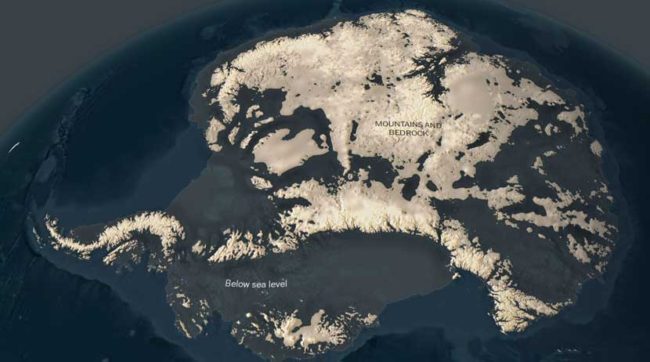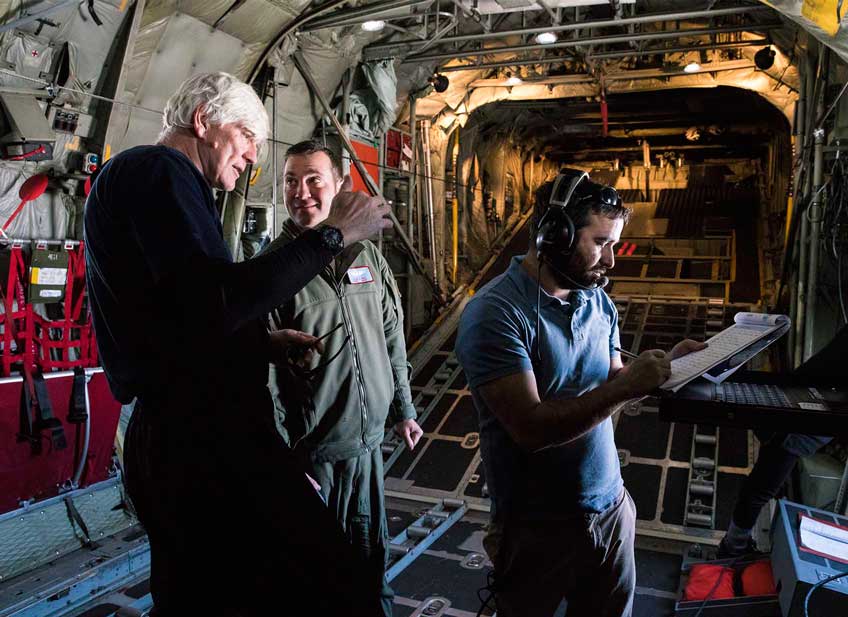
What did they discover, did they find that things are not as bad as some advocate, or perhaps that things are a lot worse than we can possibly imagine?
We get to find out now because their Antarctic dispatch has been published online in three parts …
- Part 1 here – MILES OF ICE COLLAPSING INTO THE SEA
- Part 2 here – LOOMING FLOODS, THREATENED CITIES
- Part 3 here – RACING TO FIND ANSWERS IN THE ICE
Below is a brief summary of each part.
Part 1 – Miles Of Ice Collapsing into the Sea
The opening visual graphics within this first part are truly stunning, I recommend clicking the link to see them. What it illustrates for you is how the ice is flowing into the sea.
Their opening is that the acceleration of the melt has caused some scientists to fear that we are now in the early stages of an unstoppable disintegration of the ice sheets. This should truly worry us because it will lead to a rapid sea level rise that would flood many major costal cities.
A rapid disintegration of Antarctica might, in the worst case, cause the sea to rise so fast that tens of millions of coastal refugees would have to flee inland, potentially straining societies to the breaking point. Climate scientists used to regard that scenario as fit only for Hollywood disaster scripts. But these days, they cannot rule it out with any great confidence.
…Recent computer forecasts suggest that if greenhouse gas emissions continue at a high level, parts of Antarctica could break up rapidly, causing the ocean to rise six feet or more by the end of this century. That is double the maximum increase that an international climate panel projected only four years ago.
… but, drama aside, there are still huge unknowns here, questions that simply do not have answers because we do not have enough data …
Yet as they try to determine how serious the situation is, the scientists confront a frustrating lack of information.
…“We could be decades too fast, or decades too slow,” said one of them, Robert M. DeConto of the University of Massachusetts, Amherst. “There are still some really big question marks about the trajectory of future climate around Antarctica.”
What we do know is that if we fail to address climate change, then large parts of the Antarctic will melt. What we don’t know is how fast that melt will be.
They also have a VR video at the end of the article that is worth checking out.
Part 2 – Looming Floods, Threatened Cities
 Once again they open with some truly stunning graphics. This time it illustrates ice loss/gain since 2010.
Once again they open with some truly stunning graphics. This time it illustrates ice loss/gain since 2010.
much of West Antarctica’s ice sits below sea level, it is especially vulnerable to ocean heat.
If that ice sheet were to disintegrate, it could raise the level of the sea by more than 160 feet — a potential apocalypse, depending on exactly how fast it happened. Recent research suggests that if society burns all the fossil fuels known to exist, the collapse of the ice sheet will become inevitable.
They also discuss the universality of flood myths, and suggest that when the last ice age ended, then that would have resulted in a rapid rise in sea level that gave birth to these transcultural flood myths.
At the peak of the last ice age, about 50,000 years ago, the ice sheets grew so large and locked up so much of the world’s water that the sea level fell by an estimated 400 feet.
Beginning perhaps 25,000 years ago, after the orbit shifted again, the ice sheets began to melt and the sea level began to rise. Over several thousand years, coastlines receded inland by as much as a hundred miles.
The implication is clear. If we do not address climate change, then something akin to that is about to happen again …
In their worst-case scenario, the sea level could rise by six feet by the end of this century, and the pace could pick up drastically in the 22nd century. Dr. DeConto and Dr. Pollard do not claim that this is a certainty — they acknowledge that their analysis is still rough — but they argue that the possibility should be taken seriously.
Once again they finish with a stunning VR that is well worth checking out.
Part 3 – Racing to Find Answers in the Ice
Once again, and with the previous two, the opening images are amazing.
This time the focus is on how warm water is cutting under the ice and destabilising it. The rush is on to find out what is now happening and learn from that the manner in which things may play out.
“What we need to know is really the details of what is occurring where the ice, ocean and land all come together,” said Ted A. Scambos, a University of Colorado scientist who is helping to plan the joint research effort.
Unraveling the answers, and gaining a better understanding of how Antarctica’s ice has waxed and waned in the past, may offer a rough guide to the changes that human-caused global warming could wreak in the future.
Once again they finish with an amazing VR video that you should check out.
One last rather important key point …
It is not all inevitable …
In a study last year, Robert M. DeConto of the University of Massachusetts, Amherst, and David Pollard of Pennsylvania State University used their computer model to predict what would happen if emissions were reduced sharply over the next few decades, in line with international climate goals.
Under the most ambitious scenarios, they found a strong likelihood that Antarctica would remain fairly stable.
“There’s still a chance that all hell will break loose,” Dr. DeConto said. “But the model is suggesting there’s a way to reduce the risk of a big sea-level rise from Antarctica.”
The decisions we make have consequences, both negative and also potentially positive.

